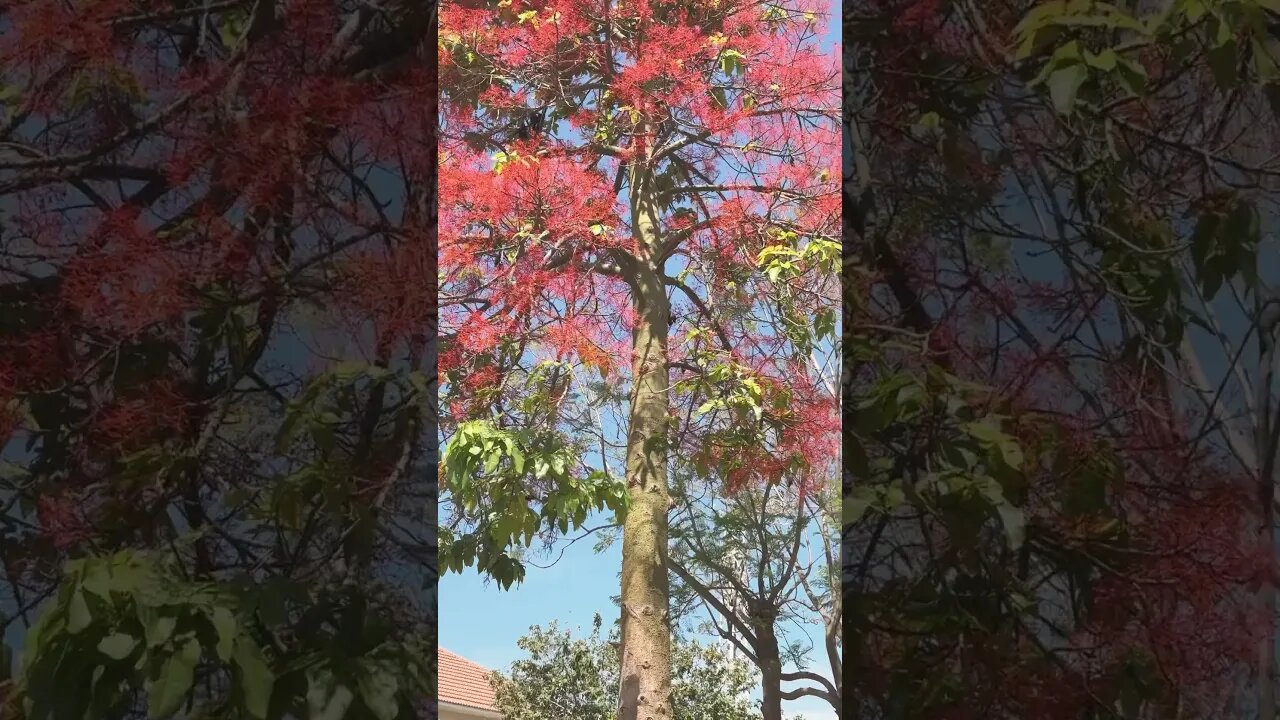Premium Only Content

Everything about the Silk Floss Tree
#silkflosstress #redflowers #treeflowers #floweringtree #southamericantree
The Silk Floss Tree (Ceiba speciosa), also known as the Kapok tree or the floss silk tree, is a species of flowering tree native to South America. Here's some information about the Silk Floss Tree:
Appearance: The Silk Floss Tree is a deciduous tree that can reach heights of 50 to 70 feet (15 to 21 meters) tall. It has a straight, thick trunk with a diameter of about 3 to 6 feet (1 to 2 meters), which is covered in sharp, conical spines.
Leaves: The tree has large, palmate leaves that are typically composed of five to seven leaflets. The leaflets are lance-shaped and about 3 to 6 inches (8 to 15 centimeters) long.
Flowers: One of the most striking features of the Silk Floss Tree is its flowers. They are large, showy, and bell-shaped, measuring around 5 inches (13 centimeters) in diameter. The flowers have a pink or white color, with numerous stamens that extend beyond the petals. The blooming period usually occurs during the late winter or early spring.
Fruit: After the flowers fade, the Silk Floss Tree produces woody, pear-shaped fruit capsules. These capsules contain numerous seeds embedded in a fluffy, cotton-like substance. The fibers surrounding the seeds are often used to make pillows, mattresses, and insulation material.
Habitat: The Silk Floss Tree is native to several countries in South America, including Argentina, Bolivia, Brazil, Paraguay, and Uruguay. It thrives in tropical and subtropical regions and can tolerate a wide range of soil types.
Cultural significance: The Silk Floss Tree holds cultural significance in various regions. In Argentina, it is the national tree and is featured on the country's coat of arms. The tree is also associated with folklore and is believed to have protective qualities.
Ecological importance: The Silk Floss Tree provides habitat and food for various animal species. Birds are attracted to its flowers, and the tree serves as a nesting site for them. The nectar-rich flowers also attract pollinators like bees and butterflies.
Medicinal uses: Traditional medicine systems in South America have utilized different parts of the Silk Floss Tree for various medicinal purposes. The bark, leaves, and roots have been used to treat ailments such as fever, stomach issues, and respiratory problems.
Ornamental tree: Due to its stunning flowers and unique appearance, the Silk Floss Tree is often planted as an ornamental tree in parks, gardens, and avenues in tropical and subtropical regions worldwide.
Environmental benefits: Like many trees, the Silk Floss Tree helps mitigate climate change by absorbing carbon dioxide and releasing oxygen through the process of photosynthesis. It also provides shade, reducing the heat island effect in urban areas.
Please note that some of the information provided may vary depending on the specific species or regional variations of the Silk Floss Tree.
Regenerate response
Screenshot
-
 LIVE
LIVE
Drew Hernandez
18 hours agoTUCKER CLASHES W/ FBI, TRUMP PUSHES EPSTEIN DISCLOSURE AFTER HOAX CLAIM & IS MEGYN KELLY IN DANGER?
1,197 watching -
 LIVE
LIVE
Barry Cunningham
5 hours agoFOOD STAMPS FRAUD | STARBUCKS BARISTAS BIG MAD | MORE NEWS (AND NO REAL ESTATE!)
1,424 watching -
 2:27:02
2:27:02
TheSaltyCracker
2 hours agoTucker Blows Up FBI ReeEEStream 11-14-25
45.6K102 -
 LIVE
LIVE
I_Came_With_Fire_Podcast
11 hours agoThe Private Equity Crisis | Oh SNAP, Massive Fraud | Reindustrialization
174 watching -
 1:36:12
1:36:12
Glenn Greenwald
9 hours agoQ&A With Glenn: On the Epstein Emails; Chomsky's Friendship with Epstein; Differences Between Tucker Carlson and Nick Fuentes; the Babylon Bee's Attack on Megyn Kelly; and More | SYSTEM UPDATE #547
79K46 -
 LIVE
LIVE
Flyover Conservatives
21 hours ago“The Time Will Never Be Just Right”: The ONE Mindset Shift Clay Clark Says Changes Everything | FOC Show
255 watching -
 LIVE
LIVE
Patriots With Grit
2 hours agoHow To Escape The Media Mind-Control Machine | Sam Anthony
90 watching -
 LIVE
LIVE
SynthTrax & DJ Cheezus Livestreams
13 hours agoFriday Night Synthwave 80s 90s Electronica and more DJ MIX Livestream EAGLE VISION / Variety Edition
204 watching -
 47:56
47:56
Sarah Westall
3 hours agoSilver Reclassified: Signal of What’s Coming Next - Friday Night Economic Review w/ Andy Schectman
2.86K -
 LIVE
LIVE
Amish Zaku
5 hours agoRumble Spartans November Event
63 watching